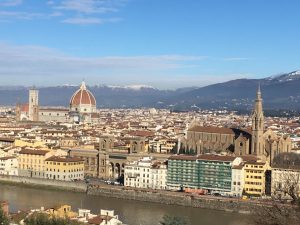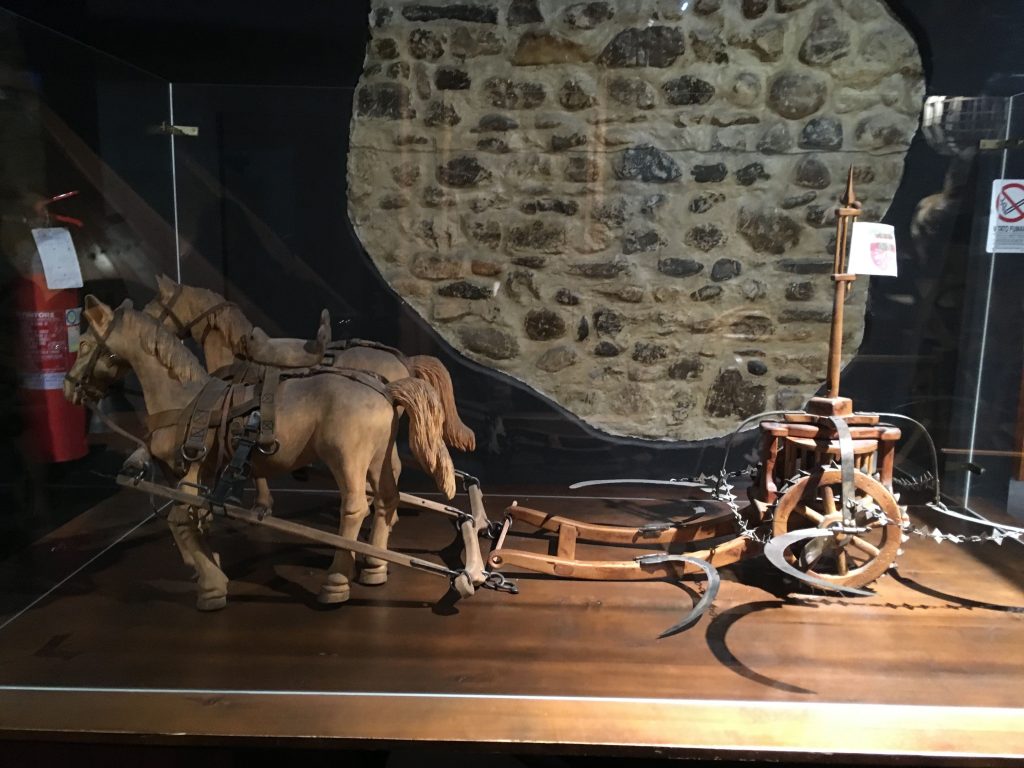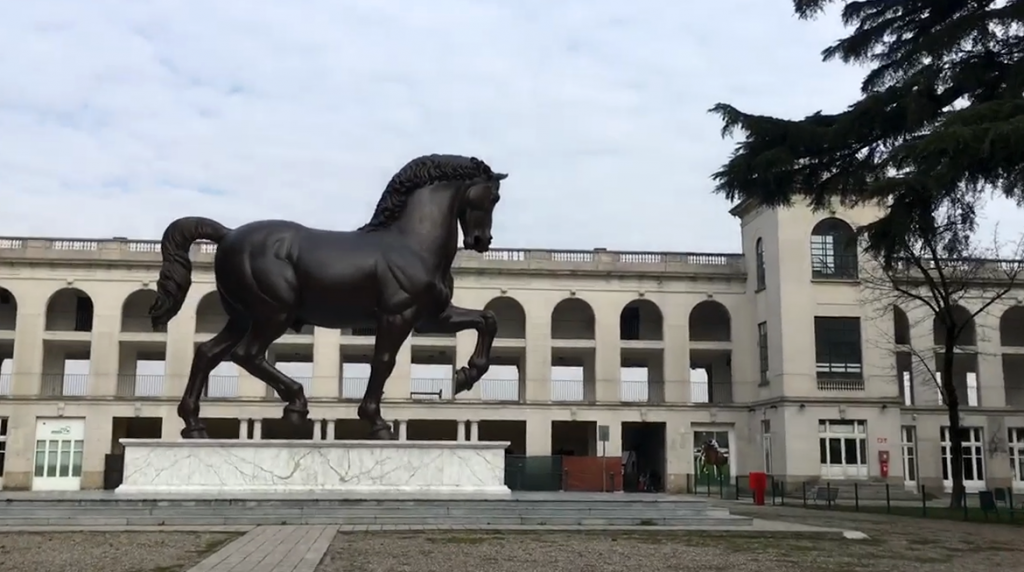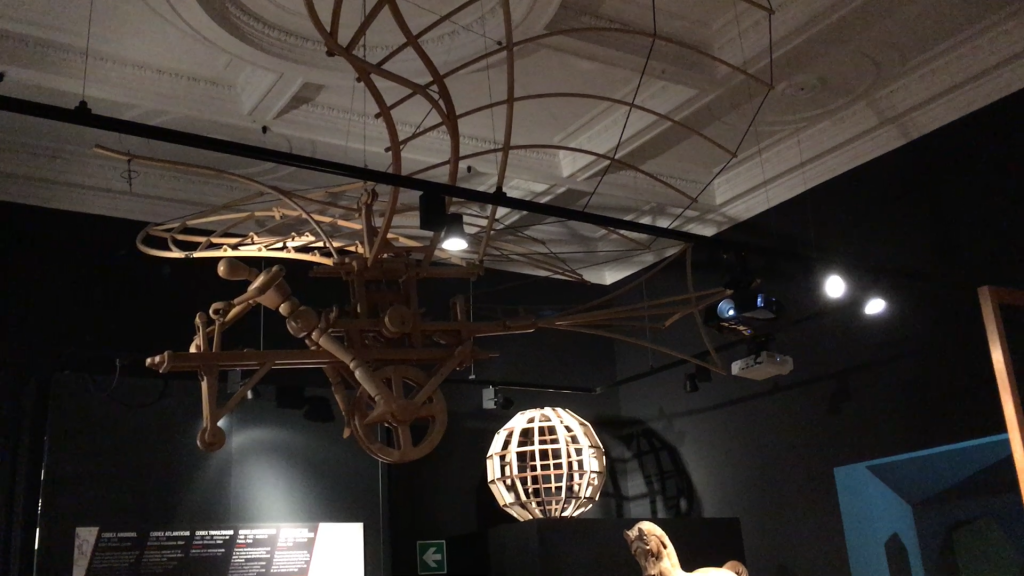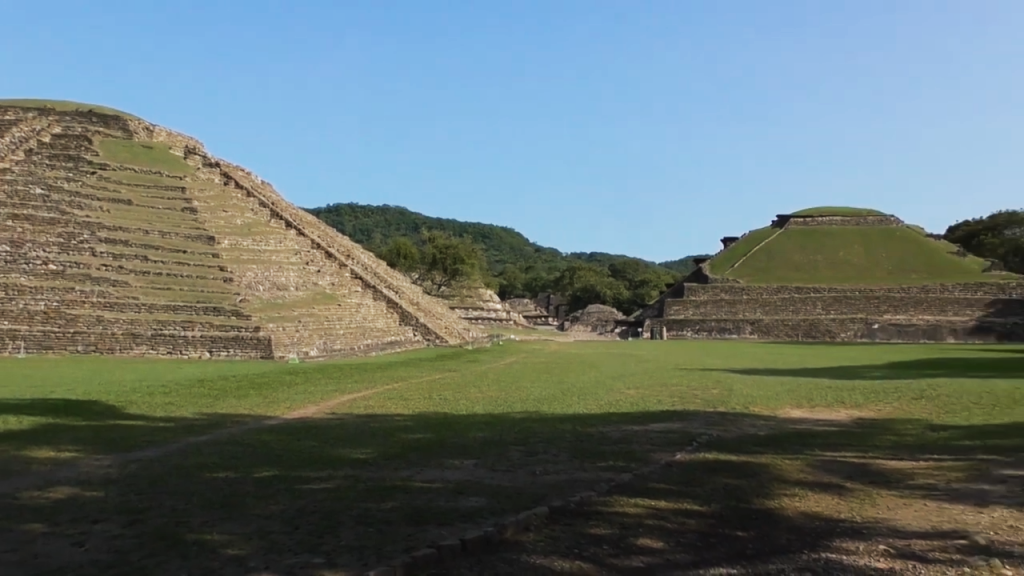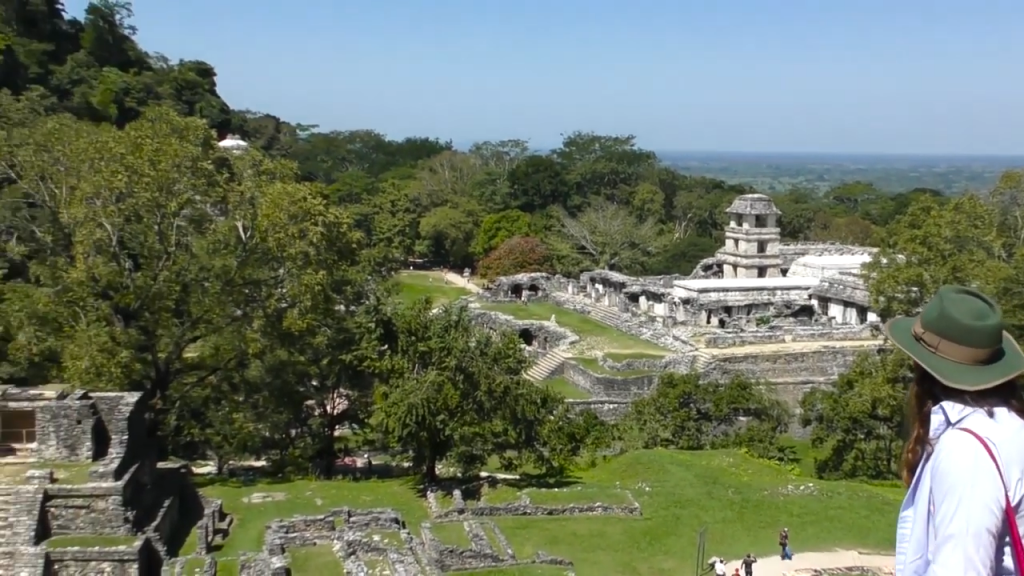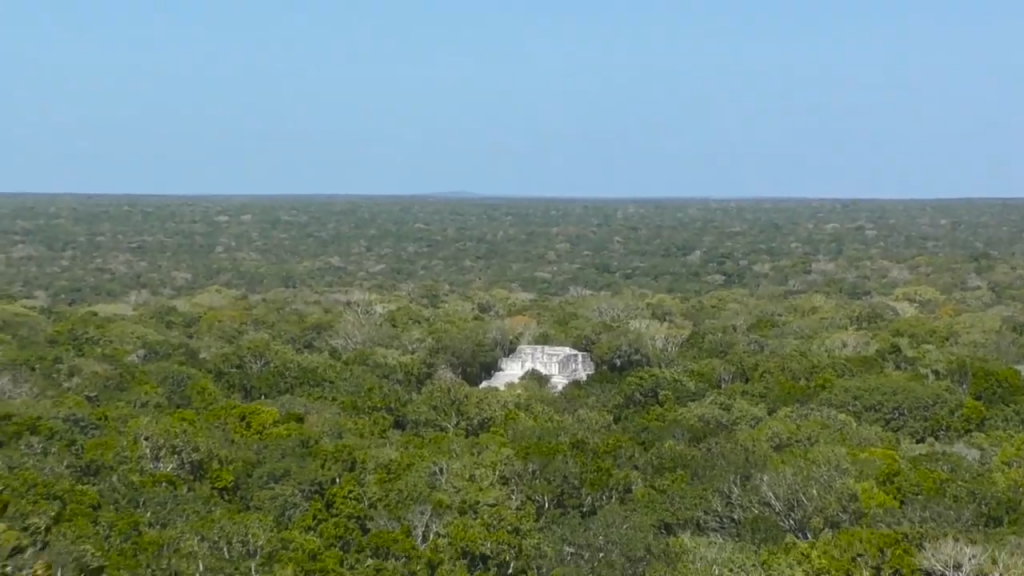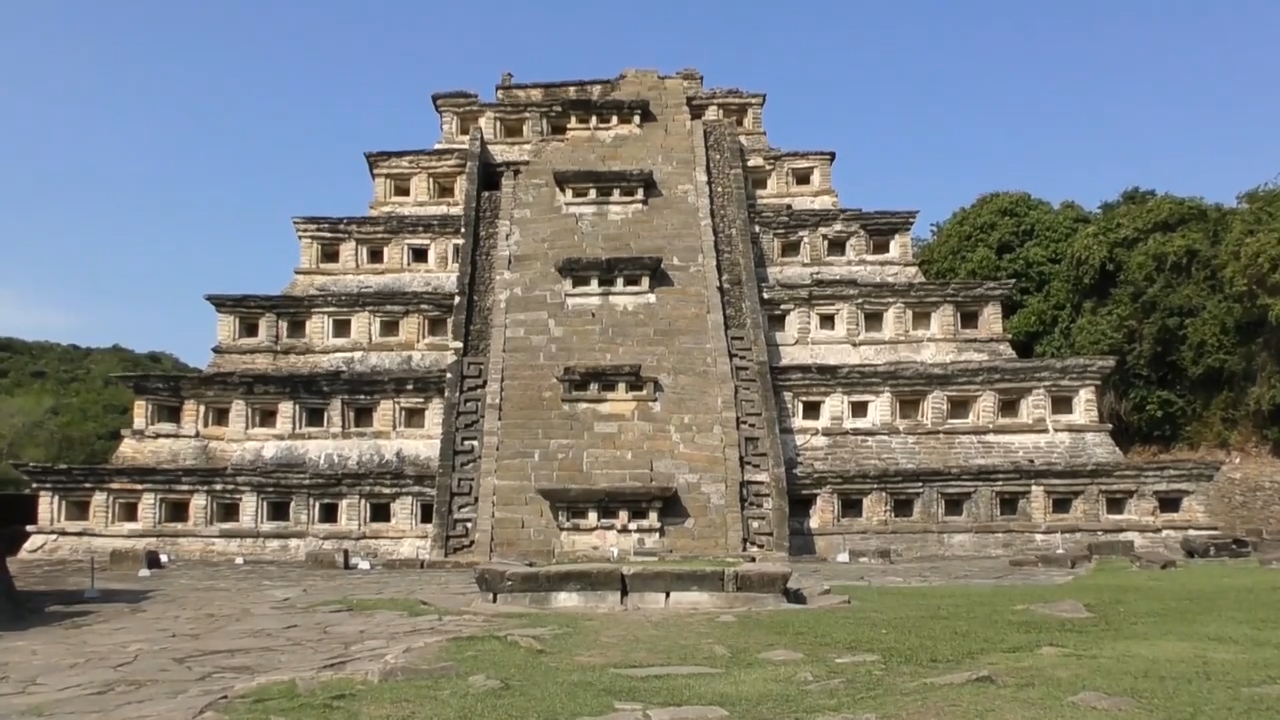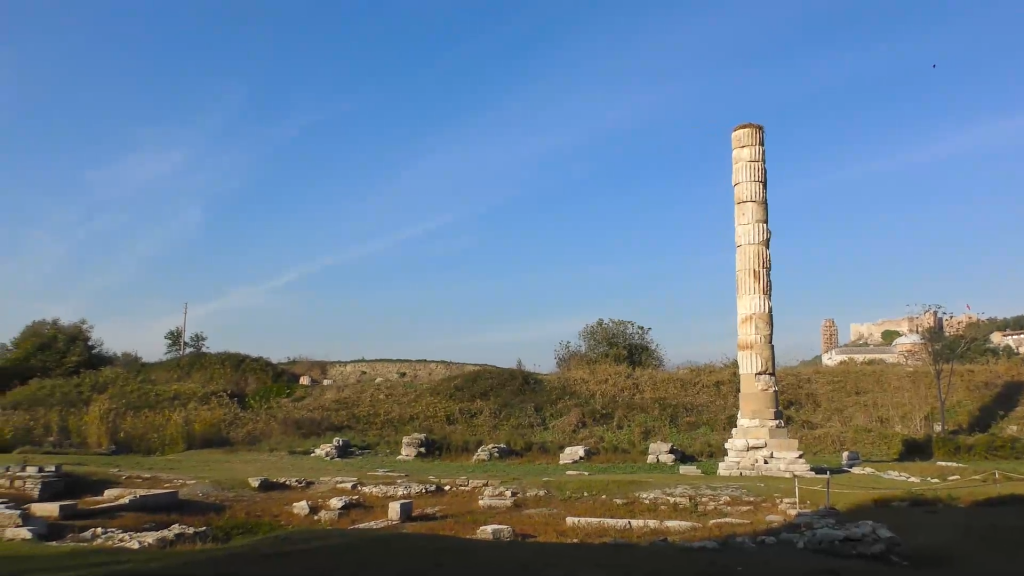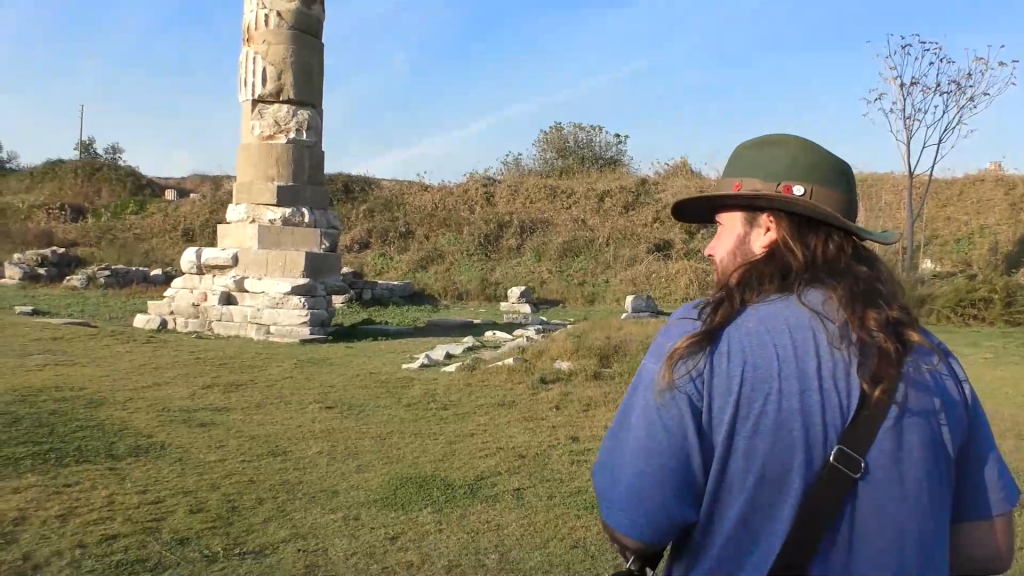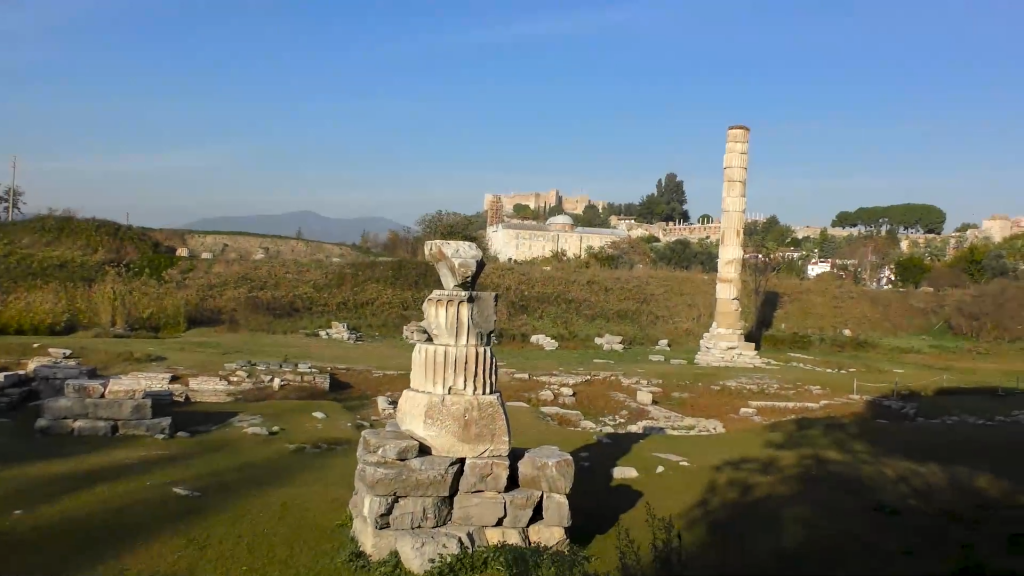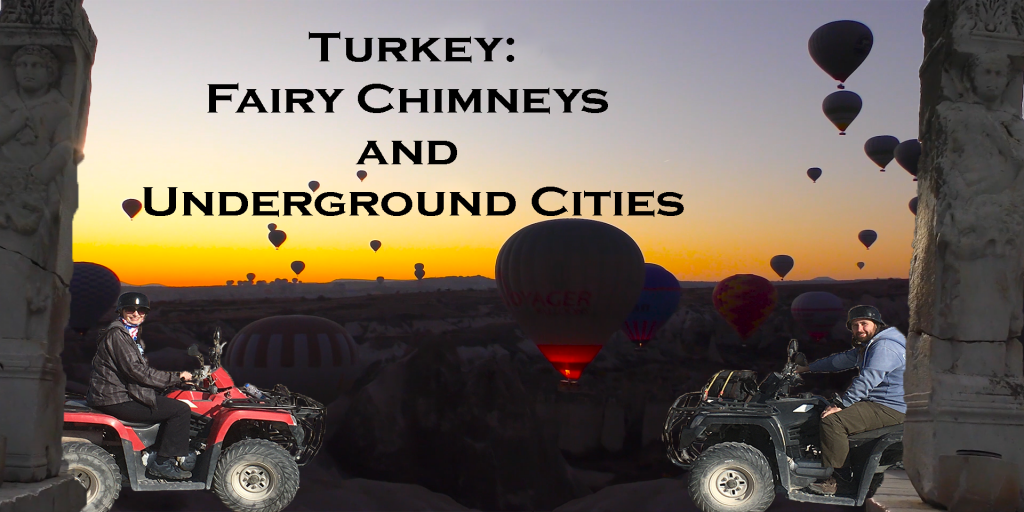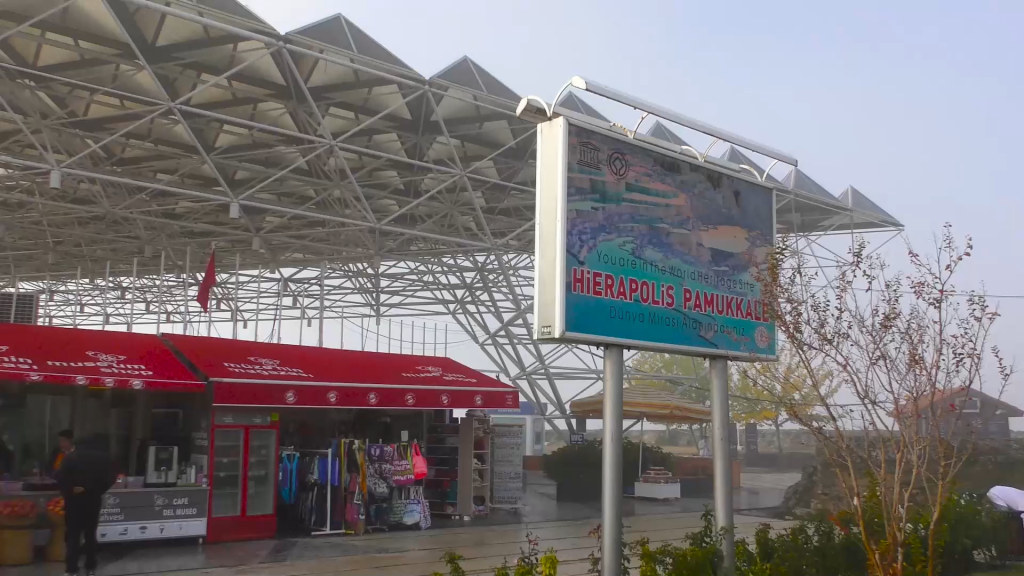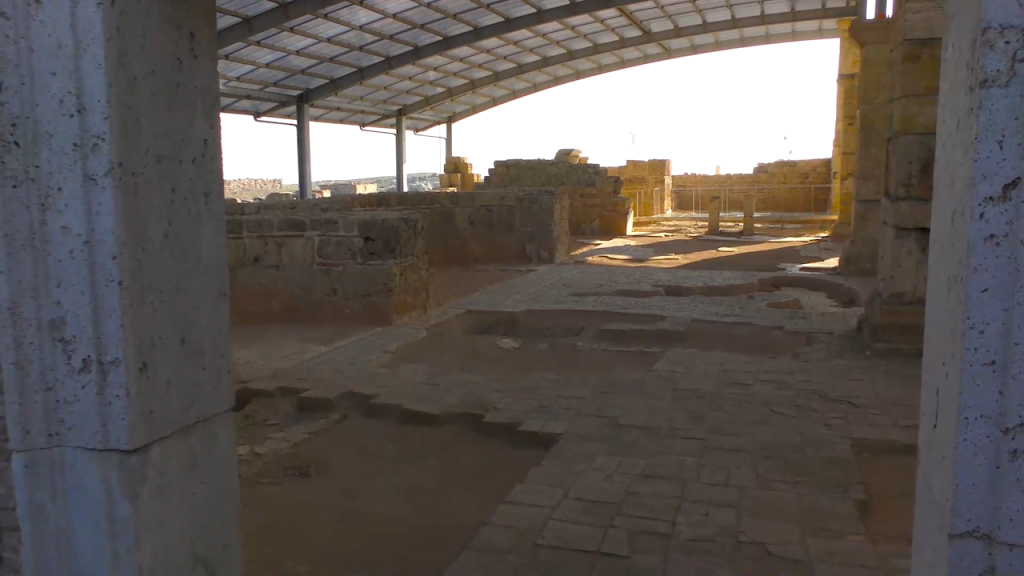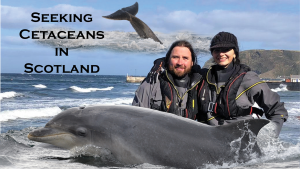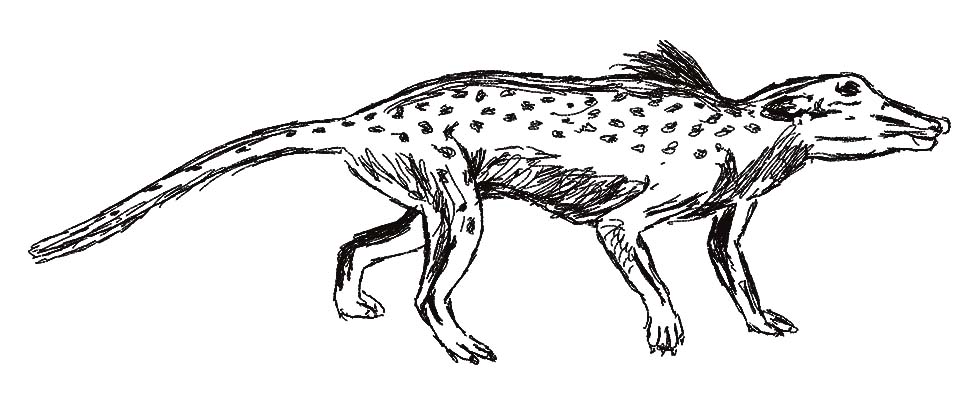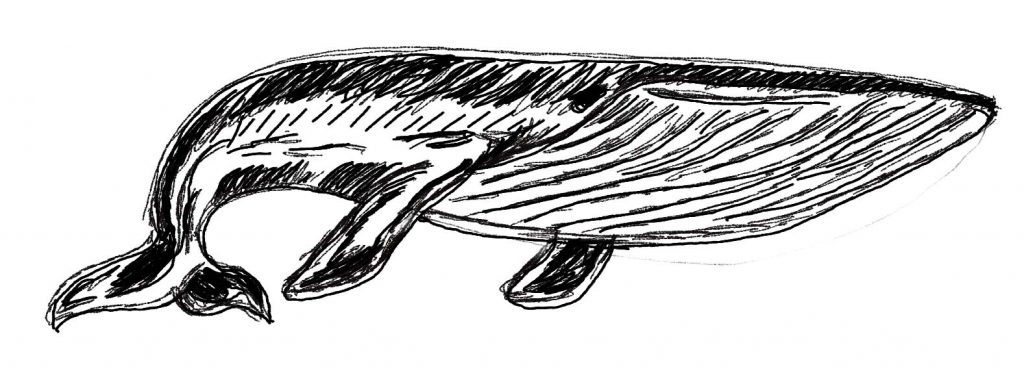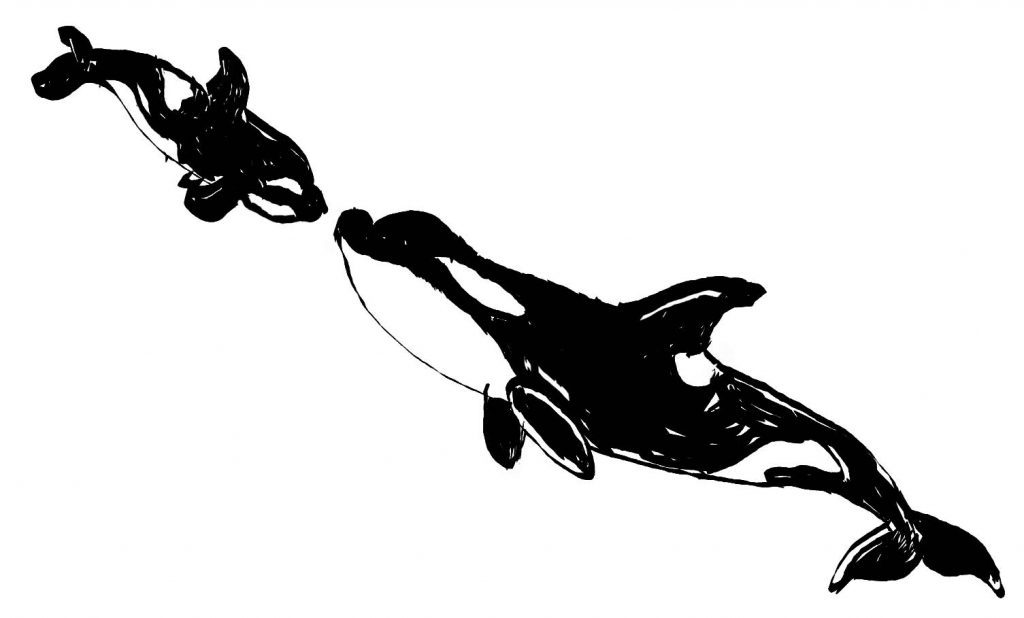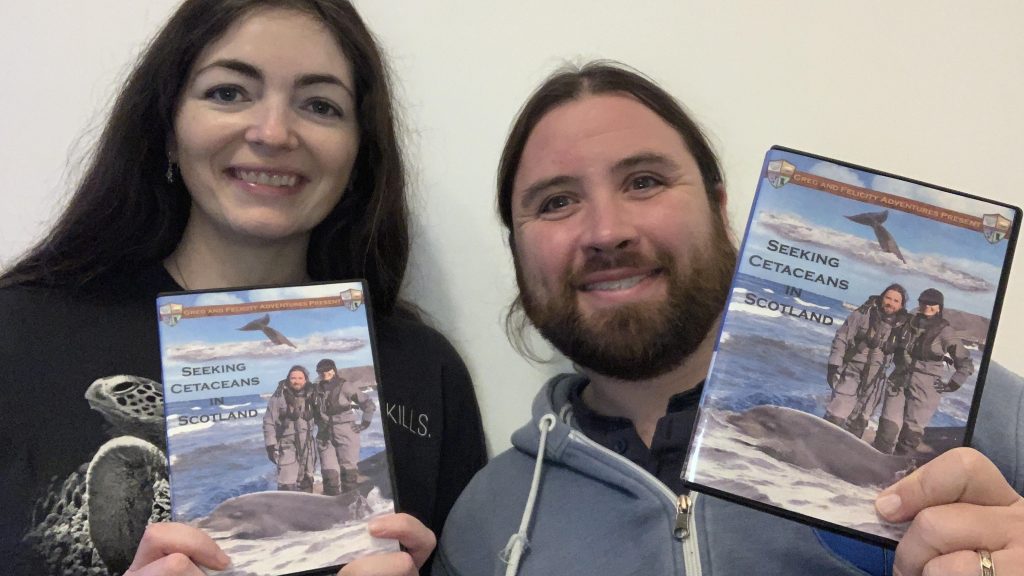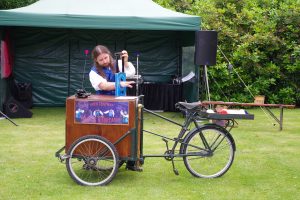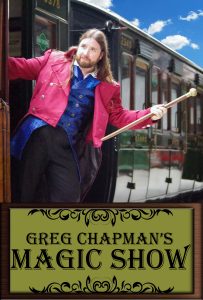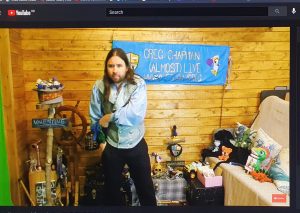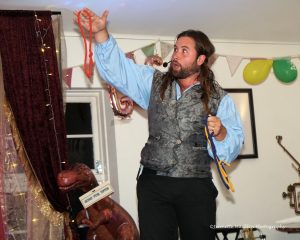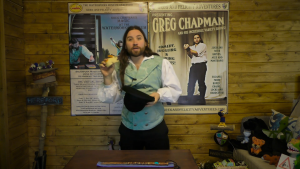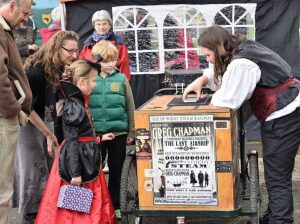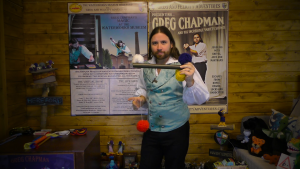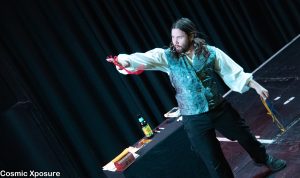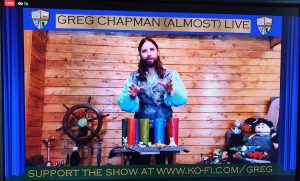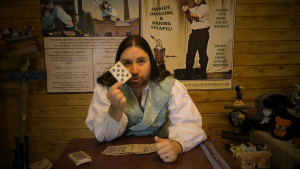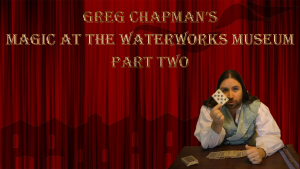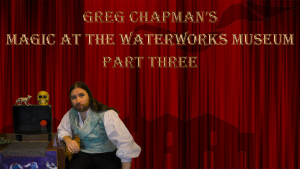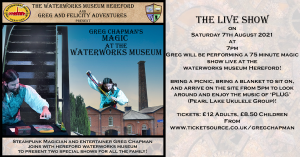Choosing a Destination
A blog post by Greg

As the world begins to open up again following the pandemic, and we can begin to look at booking travel with much more confidence that the whole trip won’t fall apart last minute (while still being aware of the possibility), it is time for Felicity and me to start planning our next travel documentary, and of course, that planning has to begin with deciding where we will be going. In this post, therefore, I thought I would take you all vaguely through the process and criteria through which we decide where we shall be heading for our next adventure, and how this has changed as we’ve moved into making the travel documentaries.
If you haven’t seen our adventures so far, we have made four travel documentaries to date, ‘Mexico: Mayan Mystery and Marine Majesty‘, ‘The Isle of Man: Railways, Castles and Seals‘, ‘Turkey: Fairy Chimneys and Underground Cities‘, and ‘Romania: Seeking Dracula’s Castle‘. We have also made one travel-adjacent video, ‘Seeking Cetaceans In Scotland‘, although that leans much more towards a wildlife and charity based documentary rather than focussing on the travel.
The first of these destinations, Mexico, was never intended to become a documentary in the planning stages – it was only halfway through the trip that we realised that the footage we were filming and the things we were seeing were something that we could share with people. So this destination was decided purely on the fact that we wanted to see the Mayan ruins and the whales of Magdalena Bay, and we planned the trip around those, purely focussing on what we would enjoy.
Once we had put together the documentary for YouTube, and released it, we knew that we wanted to make more travel documentaries, and the experience of travelling in Mexico made us decide that we wanted to make filming these documentaries a big focus of our life going forward, and to make them our job.
At this stage we were only releasing them on YouTube, and so I knew that to get some traction on YouTube we needed to get more videos out as soon as we could possibly do so, while maintaining the quality, so that people watching the Mexico video would have something else to follow it up with. I was already booked to perform on the Isle of Man a couple of months later, and so as we were already going to be there it made sense to extend the stay for a few days and use the time to make a second travel video there, so we did.
Then we started thinking about the third documentary, and this was the first time that we found ourselves sitting down to decide on a place to visit with the specific intention of filming a documentary. As we were now looking at making the travel videos a business, and as we had already had a big adventure in Mexico at the start of the year, and as at this point in time, beyond putting the videos on YouTube, we hadn’t really figured out how we were actually going to make money from these videos we knew we had to be careful with the budget, which meant we couldn’t go away for a whole month, and that some of the places we wanted to visit were not possible as the way we wanted to film there would prove to be too expensive.
We did, however, want to make it somewhere very different from the Isle of Man or Mexico. Felicity pointed out that she had always wanted to see the Fairy Chimneys of Cappadocia, and a little research told us that this was the same area of Turkey that had a number of underground cities which I had read about and was very interested in, and so Turkey immediately became the only choice for us for our third video. We selected a number of activities in the country which we thought would be interesting and would also allow for great footage.
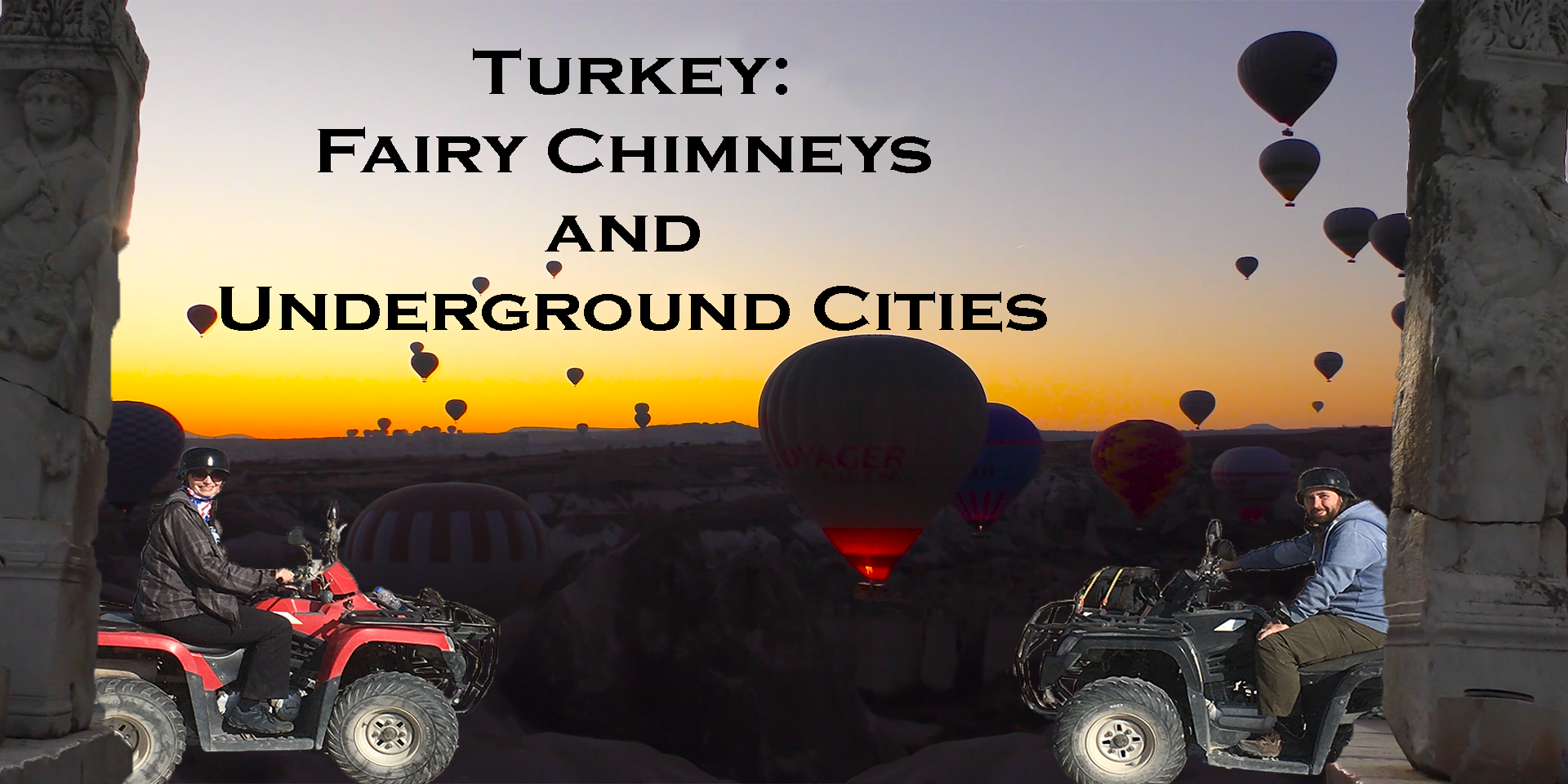
Every step of the way here we had been learning, trying out different things. In Mexico we had really had an adventure of two parts, the first part driving between various Mayan ruins, and the second part spending time in a number of marine and underwater environments in Mexico. We actually split it into a ‘Part One’ and ‘Part Two’ within the video. Looking back on this one now, were we going out there with the intention of filming again, I would have probably pushed towards filming and editing these as two separate documentaries, to allow each of the two themes to have its own clear focus.
With the Isle of Man we had a great time filming, and produced a video which a lot of people seem to have really enjoyed, but I think we both felt that it lacked the ‘travel’ aspect. The Island was a little close to Britain (both in distance and in culture, language, etc), and as we stayed in one place for the whole time, and places were only half an hour or so away from where we were staying, we both felt that we had lacked the ‘travel’, a risk which Felicity had pointed out before we went. I am very glad that we chose to film our second video there, however, because a few people have commented how much they enjoyed the comedy and personality which came through from us in that one, something which we strive to get into every video we make.
As a third video location, Turkey was wonderful, and a change of pace again from the Isle of Man and Mexico. In terms of travelling it was somewhere between the two – in Mexico we had travelled for a month and stayed in a different hotel every other night, in the Isle of Man we had based ourselves in the Milntown Estate for the whole time, while in Turkey we stayed in three different hotels in three parts of the country, each allowing for a different ‘flavour’ to the adventure. We also made sure that ‘experiences’ came to the fore in this adventure – hot air balloons, crawling through underground cities, ATV riding, and THAT horse ride (if you don’t know what I am talking about, head over and watch Turkey: Fairy Chimneys and Underground Cities to see me truly terrified on horseback!). This is the first video we made which has been taken onto streaming sites such as Tubi and Plex (although not the first video to get onto bigger streaming platforms, as I will come to shortly), and so we know that the quality was there by this point. However, looking back on the edit on this one, it is a series of great experiences in a wonderful country, but it is important to look at our videos constructively to see what we can approve the next time, and to me the thing that we still hadn’t got quite as I would have liked was a ‘through line’ to the video, a reason why we started and ended up where we did.
This brings us to our most recently released fully travel-focused documentary, ‘Romania: Seeking Dracula’s Castle. I say ‘fully travel-focused’, but of course it has a historical backdrop to it as well, as we used the history of Vlad III of Wallachia, or ‘Vlad the Impaler’ to his enemies, as the backdrop to the journey, giving us a reason to go to the various places that we wanted to visit within the country, while allowing us the freedom to add places, like the LiBearty Sanctuary and the DinoPark, which were outside of the main ‘Dracula’ remit. We managed, in my opinion, to plot a good route which made sense in the context of the documentary, to include funny moments and our personality, to truly have a travel video travelling from place to place, and to put together all of the things we had learned about planning the travel and putting together the video. This seems to have been proved correct as this is by quite a margin the most popular of our travel documentaries to date.
By the time that Romania was released on YouTube in April 2020 we found ourselves in lockdown for the duration of the pandemic. As I mentioned in the blog post ‘A Treatise On Magic’, at the start of lockdown as shows were cancelling around us (and before we knew just how long it would all last), I told Felicity that I was determined to come out of the situation in some way better than we went in.
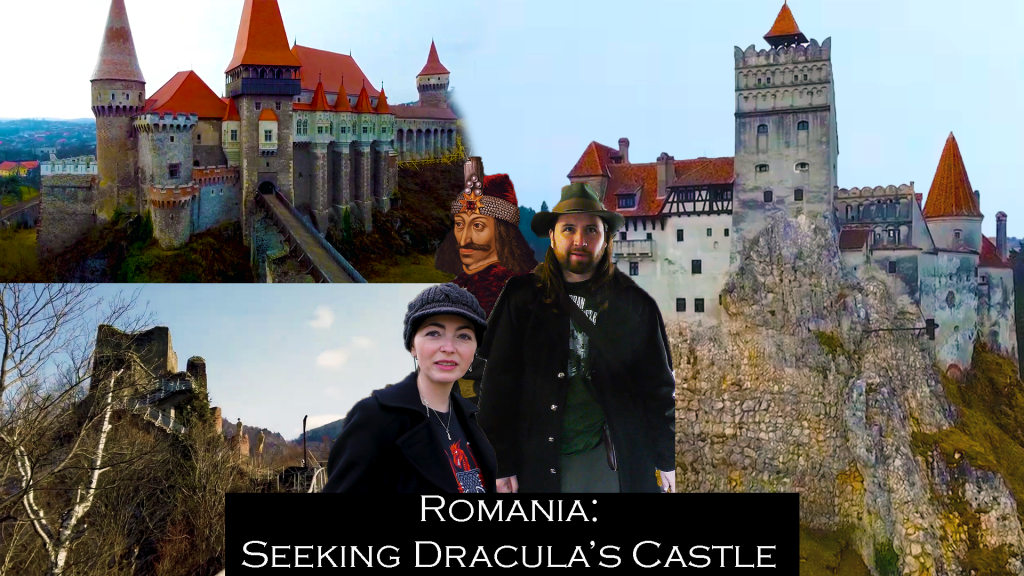
With the success of Romania on YouTube, I turned my focus to how we could move from putting our documentaries on YouTube, which, while great for shorter videos or tutorials, was not a great fit for our documentaries and was not going to enable us to turn them into a business. I learned a lot, and by the end of 2020 we had the news that ‘Romania: Seeking Dracula’s Castle’ had been accepted onto Amazon’s Prime Video, where it is still available to buy to watch, and where it has done relatively well (following this we also applied to them with the Turkey video and is was accepted… but between it being accepted and actually going on the platform the company changed their rules and stopped taking independent non-fiction work, a stance that we are hopeful may be changing soon). We also found a ‘Film Marketplace’ who accepted both Romania and Turkey, and have since been able to get both videos onto a number of streaming services including Tubi, Plex and more. Artistically I feel that Romania hit all of the ‘sweet-spots’, and any constructive criticism would be on a technical basis, which it why we have been investing time and money on a range of new equipment, particularly focussing on sound!
This means that as we come out of the pandemic, and can finally get to work planning our first full travel-based documentary filming in two years, that we are finally crossing over to the point where we are actually starting to make a real business out of our travel videos, and take another step closer to being full-time travel documentary makers (to clarify, that means we’ve been making travel documentaries full time, not that we would be well fed and making documentaries about time-travel!). We therefore have to take three types of factor into account when we choose our next adventure location, what I think of as excitement, story, and business.
We begin looking at a country by scouring the internet to find out what places there are to visit in the country, and it is here that we are looking for the ‘excitement’. We have to find places or experiences which get us excited about the prospect of seeing them. For Felicity, the easiest way to find excitement is with wild animals, especially marine wildlife, while for me it tends to be an interesting piece of history, or historical story around a place (can you see how we ended up choosing Mexico for our Honeymoon?). Then, for both of us, something unusual, some form of oddity, is another big draw that will get us excited about a place. When there are countries which don’t give us that excitement we put them to one side to come back to another time – if we’re not excited by the adventure, how can we expect to excite the viewer with it?
After we are excited, we start looking for a story. Is there a clear route across, around or through the country that allows the journey to make sense? Are we able to find enough different places and stories along that route that the documentary will stay interesting throughout, and can we plan the route in such a way that we build to a clear ending? This involves much looking at maps and figuring out potential routes. There is also something that happens at this point within my head which I can’t really explain, which I refer to Felicity as ‘seeing a story’, which is the most important thing to me. While I couldn’t, at that point in time, tell you what the complete story will be, and, as we just film a lot of footage as we go and edit it down later, I couldn’t even begin to tell you what the ‘beats’ of the story will be, I can suddenly see there is a story. This will then slowly clear itself up through the whole process of filming and editing, but it is a gut reaction that the story exists in that country, and it is up to us to find it!
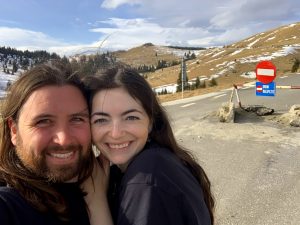
This is all fairly simple – with just these two points we could go anywhere in the world! For the third step, however, we have to strap on our business heads. Any journey we plan, of course, will have a budget, a cost which we will have to cover from our income from the video before we can even begin to make a profit. We therefore have to look at the cost of the adventure, whether we think there is a potential for gaining sponsorship for the journey or will have to pay the costs upfront ourselves, and whether we think that we can gain enough interest in the video to raise the funds to not only cover the costs, but also to make a profit to make it a successful business proposition. We don’t need the documentary to make us rich, but enough profit to allow us to keep going with this line of work, and to hopefully continue to upgrade and improve equipment! We have to look at the total cost and how long it would take us to raise the funds necessary to make the documentary we want to make. Doing a ‘cheaper’ version of a documentary is not an option we look at – we want to make each documentary the best it can be, as we are unlikely to get a second shot at making a documentary about any given country. At the same time, we don’t just want to go for the least expensive potential video on our list, because one that cost slightly more to make may have a theme, story, or location which we think has a better chance of making more income towards the next adventure.
Eventually, we hit on a place that hits all of the criteria, and it just feels that the time is right for that particular documentary, and then it is full steam ahead trying to get everything sorted in time for whenever the next set of dates we have booked off for a travel adventure should happen to fall. So I’d better get back to pouring over maps and researching on the internet so we can find our next adventure!
Happy adventuring, and please, take unbelievably good care of yourselves, and of each other!
Greg
P.S.
If you enjoyed this blog post, please leave a comment and say ‘hello’!
For information on all of our projects, visit: www.gregandfelicityadventures.com
Follow us on Instagram at: https://www.instagram.com/gregandfelicity
Like us on Facebook at: https://www.facebook.com/GregandFelicityAdventures
There are various places you can watch our documentaries and series!
Seeking Cetaceans In Scotland: A two-part documentary about the work of the Cetacean Research and Rescue Unit as they work to help whales, dolphins and porpoises in the Moray Firth in Scotland:
Free in the USA on Tubi TV at:
https://tubitv.com/movies/678018/seeking-cetaceans-in-scotland
Free Worldwide on PlexTV at:
https://watch.plex.tv/movie/seeking-cetaceans-in-scotland
With a library card on the Hoopla service where applicable:
https://www.hoopladigital.com/title/15313766
Free in the USA on Xumo at:
https://www.xumo.tv/channel/99991731/free-documentaries?v=XM00ILOFXCKLUC&p=74071
Buy it without ads Amazon’s Prime Video at:
UK: https://www.amazon.co.uk/dp/B09RVWVFCV
USA: https://www.amazon.com/dp/B09RVWJGY1
(Greg and Felicity are donating half of our streaming income on this documentary to support the CRRU).
Available to buy on DVD (with £5 from each donated to the charity): https://ko-fi.com/s/73e469d114
ROMANIA: SEEKING DRACULA’S CASTLE: Our travel documentary looking into the history, legend and castles connected to Vlad Dracula III, sometimes known as Vlad the Impaler, and a journey around Romania:
Free Worldwide on Plex: https://watch.plex.tv/movie/romania-seeking-draculas-castle
Free (USA) on Tubi: https://tubitv.com/movies/579192/romania-seeking-dracula-s-castle
Prime Video (From £1.99, no Ads) (UK): https://www.amazon.co.uk//dp/B08RDPZP14
Prime Video (From $1.99, no Ads) (USA): https://www.amazon.com/dp/B08RDJR4F2
TURKEY: FAIRY CHIMNEYS AND UNDERGROUND CITIES: A travel documentary across Turkey, from the Fairy Chimneys and Underground Cities of Cappadocia to the ancient Greek ruins of Ephesus and Hierapolis:
Prime Video UK (From £2.49, no Ads): https://www.amazon.co.uk/Turkey-Fairy-Chimneys-Underground-Cities/dp/B09KKSZLRW
Prime Video USA (From $1.99, no Ads): https://www.amazon.com/Turkey-Fairy-Chimneys-Underground-Cities/dp/B09KK6VDJB
Free Worldwide on Plex: https://watch.plex.tv/movie/turkey-fairy-chimneys-and-underground-cities
Free (USA) on Tubi: https://tubitv.com/movies/579225/turkey-fairy-chimneys-and-underground-cities
Greg Chapman’s Magic Show: An eight-part series of magic and entertainment with Greg:
Free in the USA on Tubi at: https://tubitv.com/series/300008713/greg-chapman-s-magic-show
Free worldwide on Plex: https://watch.plex.tv/show/greg-chapmans-magic-show/season/1
Available to buy on DVD: https://ko-fi.com/s/7c1bc10a08
Mexico: Mayan Mystery and Marine Majesty: Filmed on our honeymoon in Mexico in 2019, our first travel documentary took us through the ancient sites of Teotihuacan, Uxmal, El Tajin, Palenque, Chichen Itza and Calakmul, and then on to see the whales of Magdalena Bay, whale sharks of La Paz, and more.
Watch free on YouTube: https://youtu.be/yfMpD868MHU
The Isle of Man: Railways, Castles and Seals: Our second travel documentary took us to the Isle of Man!
Watch free on YouTube: https://youtu.be/uCpUa6XEkbg
